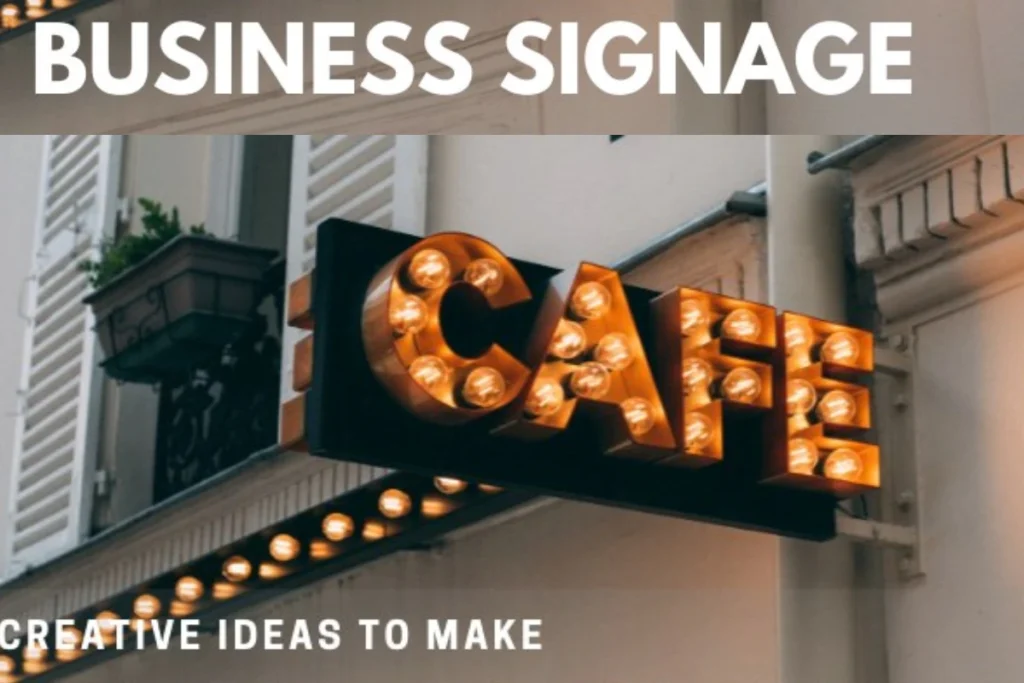Business signage occupies a unique branding space, conveying what your brand embodies, cherishes, and offers at key customer touchpoints. But what exactly transpires in the crucial seconds someone interacts with your signage? It is vital to ensure it works to grab attention, spark intrigue, and shape perceptions. This underscores the need for optimized business signage that blends aesthetics and functionality.
The signage, placement, and broader brand context weave a narrative that can deeply resonate with or completely miss your audiences. Get it right, and your signage creates standout first impressions as people traverse their daily spaces. Whether passing retail fronts, glancing up at building hoardings, or spotting reception display boards, business signage moments offer make-or-break opportunities to connect.
The quality of design and strategic value offered by your business signage ultimately serve as in-situ brand ambassadors. When skillfully crafted and positioned, they convey your mission and brand promise distinctly and impactfully. As we explore key considerations to create signage with such standout appeal, let’s re-examine what we want displays to achieve for branding wins.
1. Know Your Audience
At its heart, signage aims to engage its viewers. Therefore, understanding target audience demographics and psychographics should shape aesthetic and messaging choices. Consider their priorities, sensibilities, and contexts to determine the appropriate signage design sophistication. For a shop frequented by teenagers, trendy digital displays with interactives may appeal more. In a commercial zone, clean, striking signage shapes positive perceptions.
2. Complement the Space
Business signage works best when it blends into its situational backdrops. Consider surrounding architecture, color schemes, and lighting conditions when planning the creative direction. Will the signage be positioned indoors or outdoors? What shapes and surfaces dominate the area? Evaluating spatial factors ensures signage that clicks with its settings for an integrated feel. For a natural stone office exterior, linking to the textures in sign materials makes sense.
3. Balance Form and Function
Beyond aesthetics alone, business signage must relay vital brand-centric information clearly to audiences at key touchpoints. Prioritizing communicating the logo, store hours, or key differentiating messages through smart hierarchy, legible fonts, and thoughtful positioning enables function. You still retain design flexibility to make the format creative whether through an unusual shape, a branded slogan, or accent colors.
4. Assess Lighting Conditions
Lighting conditions play a major role in signage visibility and should inform material choices. Consider average daytime and nighttime luminance for exterior business signs, choosing durable, fade-resistant substrates and coatings. Where spotlights or floodlights illuminate signage, designing for enhanced reflections matters more. For interiors, choose light-reactive colors, finishes, and illumination accordingly – say, backlit displays for darker lobbies.
5. Plan for Responsiveness
Digitally integrated business signage, whether it be interactive panels, 3D displays, or LCD screens, is increasingly providing more responsive options. This makes it possible to update menus and promotions. In the event of rebranding, modular signage also makes component switching simple. Always incorporate adaptability for the future into the design of your signage, such as sign boxes that can accept new images.
Conclusion
By keeping target groups, spatial contexts, core functions, lighting, and responsiveness as north stars when planning for impactful business signage, enterprises can create standout displays tailored for long-term relevance.

